Sometimes a conductive hearing loss occurs in combination with a sensorineural hearing loss(SNHL). In other words, there may be damage in the outer or middle ear and in the inner ear(cochlea) or auditory nerve. When this occurs, the hearing loss is referred to as a mixed hearing loss.
Understanding Hearing: The Science of Sound and How It Impacts Your Life
What is Hearing?
How the Hearing Process Works
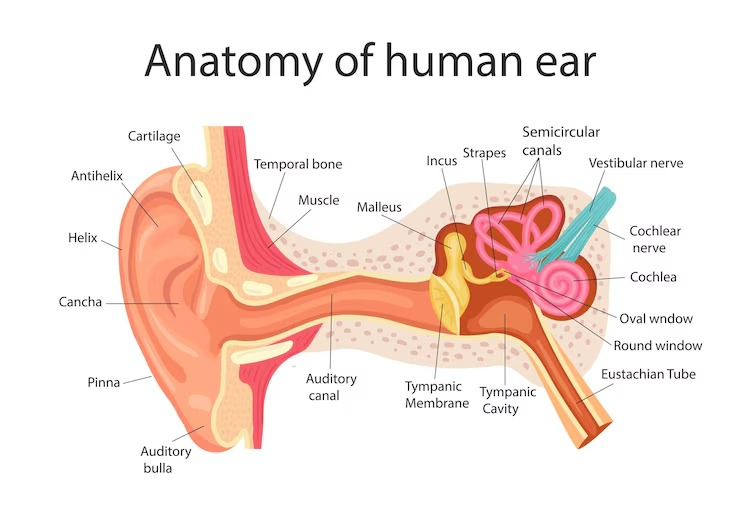
The Ear: Anatomy and Function
- The ear is divided into three main sections: the outer ear, middle ear, and inner ear.
- Outer Ear: Collects sound waves and directs them into the ear canal.
- Middle Ear: Amplifies sound and transfers vibrations to the inner ear.
- Inner Ear: Contains the cochlea, which converts sound vibrations into electrical signals sent to the brain.
- Outer Ear: Collects sound waves and directs them into the ear canal.
The Role of the Auditory Nerve
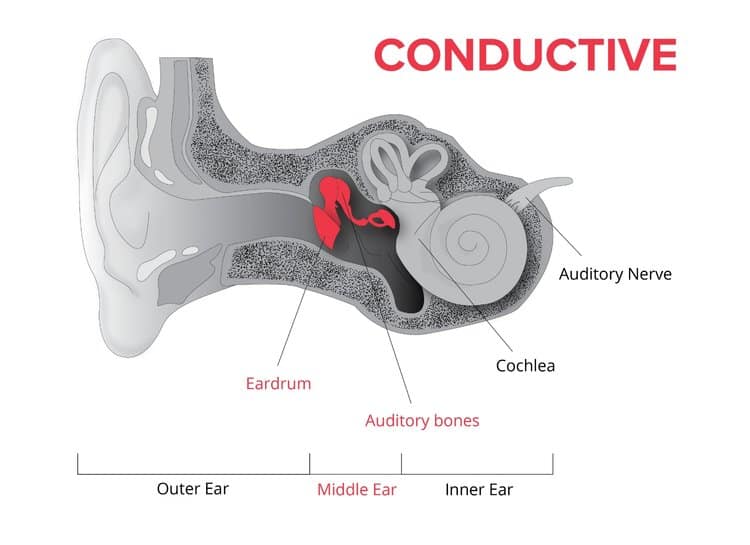
Conductive Hearing Loss
Conductive hearing loss occurs when sound is not conducted efficiently through the outer earcanal to the eardrum and the tiny bones (ossicles) of the middle ear. Conductive hearing loss usually involves a reduction in sound level or the ability to hear faint sounds. Modern techniques make it possible to cure or at least improve the vast majority of cases involving problems with the outer or middle ear. Even if people with conductive hearing loss are not improved medically or surgically, they stand to benefit greatly from a hearing aid, because what they need most is amplification.
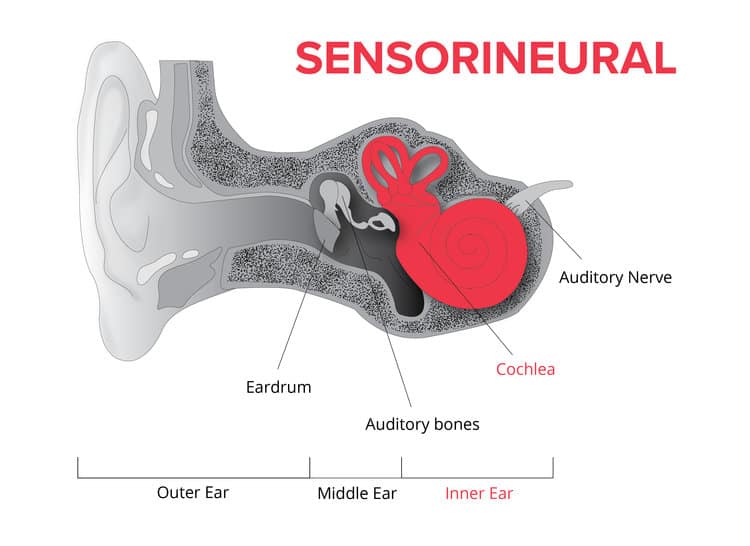
Sensorineural Hearing Loss
Sensorineural hearing loss (SNHL) occurs when there is damage to the inner ear (cochlea), or to the nerve pathways from the inner ear to the brain. Most of the time, SNHL cannot be medically or surgically corrected but stand to benefit greatly from a hearing aid. This is the most common type of permanent hearing loss.
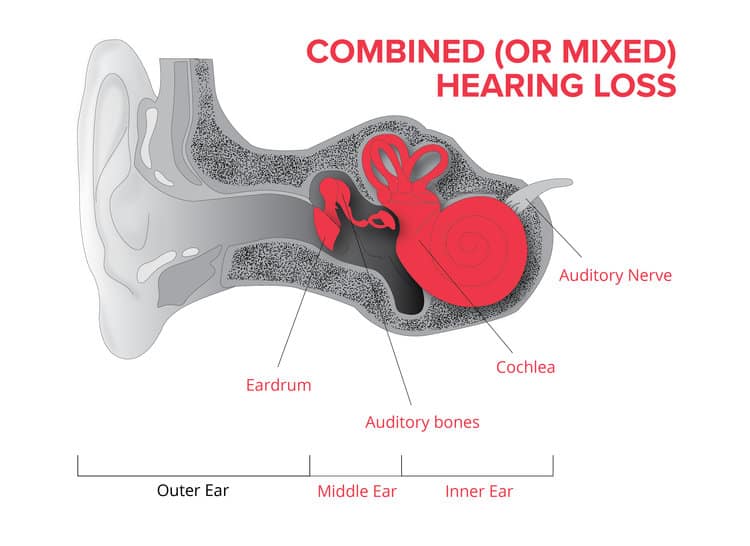
Mixed Hearing loss
Causes of Hearing Loss
Age-Related Hearing Loss (Presbycusis)
- A natural part of aging, presbycusis affects the ability to hear high-frequency sounds. It often develops gradually and can go unnoticed until it interferes with daily communication.
Noise-Induced Hearing Loss
- Caused by prolonged exposure to loud noises, which can damage the delicate structures of the inner ear. This is preventable by wearing ear protection in noisy environments.
Genetic Factors
- Inherited conditions can result in congenital hearing loss or progressive hearing loss over time.
Ear Infections and Injury
- Recurrent ear infections or physical trauma to the ear can lead to temporary or permanent hearing loss.
Medical Conditions and Medications
- Certain health conditions like diabetes, high blood pressure, and medications (such as ototoxic drugs) can contribute to hearing loss.
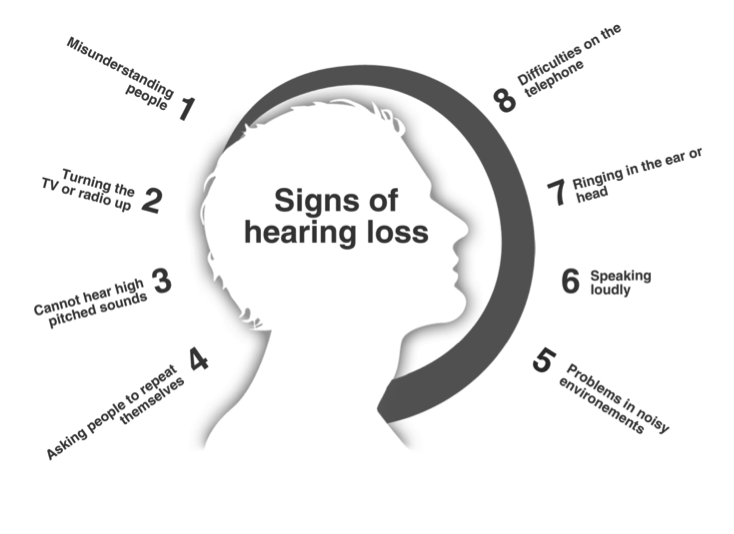
Symptoms of Hearing Loss
- Struggling to understand conversations, especially in noisy environments.
- Frequently asking others to repeat themselves or speak more slowly.
- Misunderstanding what others are saying.
- Sounds and speech may seem muffled or unclear.
- Difficulty hearing high-pitched sounds, like children's voices or birds chirping.
- Experiencing ringing, buzzing, or hissing sounds in one or both ears.
- Avoiding social situations because of difficulty hearing and understanding others.
- Feeling frustrated or embarrassed about not being able to follow conversations.
- Needing to turn up the volume on the TV, radio, or phone more than usual.
- Complaints from others that you are speaking too loudly.
- Missing everyday sounds like doorbells, alarms, or the phone ringing.
- Struggling to hear clearly on the phone.
- Feeling tired or stressed after trying to listen or participate in conversations.
Common Symptoms
- Difficulty understanding conversations, especially in noisy environments
- Frequently asking people to repeat themselves
- Ringing in the ears (tinnitus)
- Turning the volume on devices (TV, radio) higher than usual
- Feeling like others are mumbling or not speaking clearly
